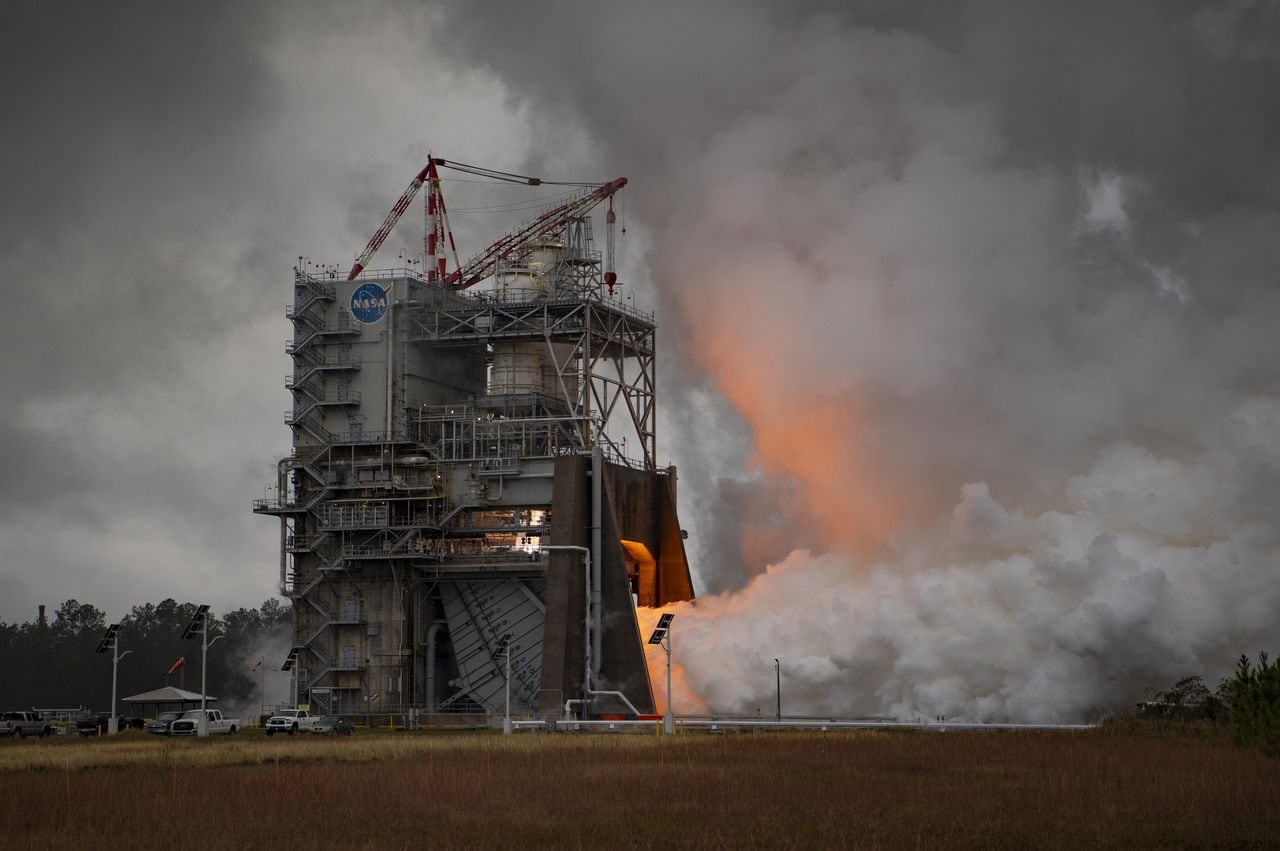Watch NASA test fire the new rocket engines which will take man back to the moon
Just as they were prior to the Apollo and Space Shuttle programs, the engines that will power manned space missions to the moon are being tested at NASA’s Stennis Space Center on the Mississippi coast.
NASA recently conducted the second hot fire in a 12-test certification series to clear the way for production of the new RS-25 engines which will power the Space Launch System (SLS) rocket for Artemis missions to the moon.
Engineers fired the rockets for a full 500 seconds — the time needed to launch SLS rockets into orbit. The tests were conducted at Stennis’ Fred Haise Test Stand — named in honor of the Apollo 13 astronaut, a Mississippi coast native and resident.
The RS-25 engine’s history traces back to studies done at Marshall Space Flight Center in Huntsville in the 1960. Three RS-25s powered each of NASA Space Shuttle missions, with a total of 46 built during the program at a total cost of $40 million. Each was tested at Stennis.
The SLS rockets will be powered by four RS-25 engines, capable of producing up to two millions pounds of combined thrust.
The new RS-25s are being built by SLS engines lead contractor Aerojet Rocketdyne, which also built the engines for the shuttle program. With completion of this latest series of tests, Aerojet Rocketdyne will begin full production of the engines for use beginning with Artemis V, scheduled to launch in late September 2029.
Previous Artemis missions are being powered by RS-25s which have been stored in “purged safe” environments at Stennis.
